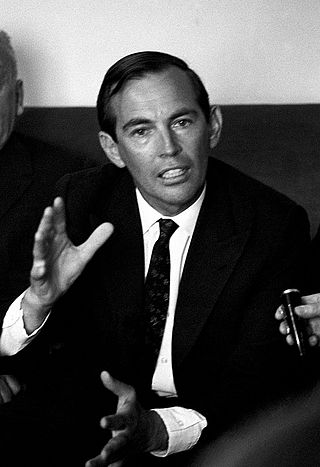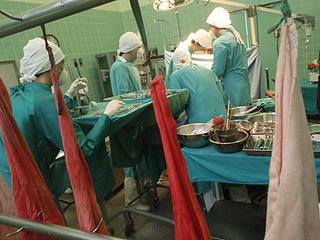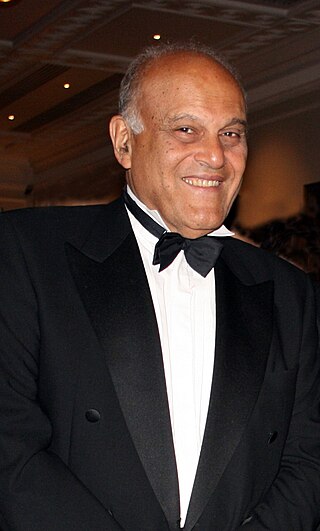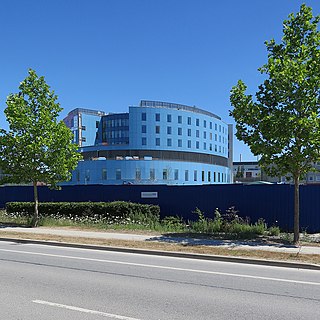
Christiaan Neethling Barnard was a South African cardiac surgeon who performed the world's first human-to-human heart transplant operation. On 3 December 1967, Barnard transplanted the heart of accident victim Denise Darvall into the chest of 54-year-old Louis Washkansky, with Washkansky regaining full consciousness and being able to talk easily with his wife, before dying eighteen days later of pneumonia, largely brought on by the anti-rejection drugs that suppressed his immune system. Barnard had told Mr. and Mrs. Washkansky that the operation had an 80% chance of success, an assessment which has been criticised as misleading. Barnard's second transplant patient, Philip Blaiberg, whose operation was performed at the beginning of 1968, returned home from the hospital and lived for a year and a half.

Organ transplantation is a medical procedure in which an organ is removed from one body and placed in the body of a recipient, to replace a damaged or missing organ. The donor and recipient may be at the same location, or organs may be transported from a donor site to another location. Organs and/or tissues that are transplanted within the same person's body are called autografts. Transplants that are recently performed between two subjects of the same species are called allografts. Allografts can either be from a living or cadaveric source.
Jesica Santillan was a Mexican national who died after an organ transplant operation in which she received the heart and lungs of a patient whose blood type did not match hers. Doctors at the Duke University Medical Center failed to check the compatibility before surgery began.

An artificial heart is a device that replaces the heart. Artificial hearts are typically used to bridge the time to heart transplantation, or to permanently replace the heart in the case that a heart transplant is impossible. Although other similar inventions preceded it from the late 1940s, the first artificial heart to be successfully implanted in a human was the Jarvik-7 in 1982, designed by a team including Willem Johan Kolff, William DeVries and Robert Jarvik.

Sirolimus, also known as rapamycin and sold under the brand name Rapamune among others, is a macrolide compound that is used to coat coronary stents, prevent organ transplant rejection, treat a rare lung disease called lymphangioleiomyomatosis, and treat perivascular epithelioid cell tumor (PEComa). It has immunosuppressant functions in humans and is especially useful in preventing the rejection of kidney transplants. It is a mechanistic target of rapamycin kinase (mTOR) inhibitor that inhibits activation of T cells and B cells by reducing their sensitivity to interleukin-2 (IL-2).

Eisenmenger syndrome or Eisenmenger's syndrome is defined as the process in which a long-standing left-to-right cardiac shunt caused by a congenital heart defect causes pulmonary hypertension and eventual reversal of the shunt into a cyanotic right-to-left shunt. Because of the advent of fetal screening with echocardiography early in life, the incidence of heart defects progressing to Eisenmenger syndrome has decreased.

Sir Magdi Habib Yacoub, is an Egyptian retired professor of cardiothoracic surgery at Imperial College London, best known for his early work in repairing heart valves with surgeon Donald Ross, adapting the Ross procedure, where the diseased aortic valve is replaced with the person's own pulmonary valve, devising the arterial switch operation (ASO) in transposition of the great arteries, and establishing the heart transplantation centre at Harefield Hospital in 1980 with a heart transplant for Derrick Morris, who at the time of his death was Europe's longest-surviving heart transplant recipient. Yacoub subsequently performed the UK's first combined heart and lung transplant in 1983.
The Vanderbilt University Medical Center (VUMC) is a medical provider with multiple hospitals in Nashville, Tennessee, as well as clinics and facilities throughout Middle Tennessee. VUMC is an independent non-profit organization, but maintains academic affiliations with Vanderbilt University. As of 2022, the health system had more than 3 million patient visits a year, a workforce of 40,000, and 1,709 licensed hospital beds.

A ventricular assist device (VAD) is an electromechanical device for assisting cardiac circulation, which is used either to partially or to completely replace the function of a failing heart. The function of a VAD differs from that of an artificial cardiac pacemaker in that a VAD pumps blood, whereas a pacemaker delivers electrical impulses to the heart muscle. Some VADs are for short-term use, typically for patients recovering from myocardial infarction (heart attack) and for patients recovering from cardiac surgery; some are for long-term use (months to years to perpetuity), typically for patients with advanced heart failure.

Lung transplantation, or pulmonary transplantation, is a surgical procedure in which one or both lungs are replaced by lungs from a donor. Donor lungs can be retrieved from a living or deceased donor. A living donor can only donate one lung lobe. With some lung diseases, a recipient may only need to receive a single lung. With other lung diseases such as cystic fibrosis, it is imperative that a recipient receive two lungs. While lung transplants carry certain associated risks, they can also extend life expectancy and enhance the quality of life for those with end stage pulmonary disease.

Royal Papworth Hospital is a specialist heart and lung hospital, located on the Cambridge Biomedical Campus in Cambridgeshire, England. The Hospital is run by Royal Papworth Hospital NHS Foundation Trust.
Transplantable organs and tissues may refer to both organs and tissues that are relatively often transplanted, as well as organs and tissues which are relatively seldom transplanted. In addition to this it may also refer to possible-transplants which are still in the experimental stage.

Bone Marrow Transplantation is a peer-reviewed medical journal covering transplantation of bone marrow in humans. It is published monthly by Nature Research. The scope of the journal includes stem cell biology, transplantation immunology, translational research, and clinical results of specific transplant protocols.
James D. Hardy was a United States surgeon who performed the world's first lung transplant into John Russell, who lived 18 days. The transplant was performed at the University of Mississippi Medical Center in Jackson, Mississippi on June 11, 1963.
Pediatric Transplantation is a monthly peer-reviewed medical journal covering pediatric transplantation. It is the official journal of the International Pediatric Transplant Association. According to the Journal Citation Reports, the journal has a 2020 impact factor of 1.502.

A heart transplant, or a cardiac transplant, is a surgical transplant procedure performed on patients with end-stage heart failure or severe coronary artery disease when other medical or surgical treatments have failed. As of 2018, the most common procedure is to take a functioning heart, with or without both lungs, from a recently deceased organ donor and implant it into the patient. The patient's own heart is either removed and replaced with the donor heart or, much less commonly, the recipient's diseased heart is left in place to support the donor heart.
The Nephrology Dialysis Transplantation is a monthly peer-reviewed medical journal. It is published by Oxford University Press on behalf of the European Renal Association - European Dialysis and Transplant Association. It is abstracted and indexed in PubMed/MEDLINE/Index Medicus. According to the Journal Citation Reports, the journal has a 2021 impact factor of 7.186. The journal's current editor-in-chief is Denis Fouque.
The University of Louisville School of Medicine at the University of Louisville is a medical school located in Louisville, Kentucky, United States. Opened as the Louisville Medical Institute in 1837, it is one of the oldest medical schools in North America and the 9th oldest in the United States.

Fikri Alican was a Turkish scientist and physician with various contributions to medical science, ranging from organ transplantation to physiology.

Stuart William Jamieson is a British cardiothoracic surgeon, specialising in pulmonary thromboendarterectomy (PTE), a surgical procedure performed to remove organized clotted blood (thrombus) from pulmonary arteries in people with chronic thromboembolic pulmonary hypertension (CTEPH).














